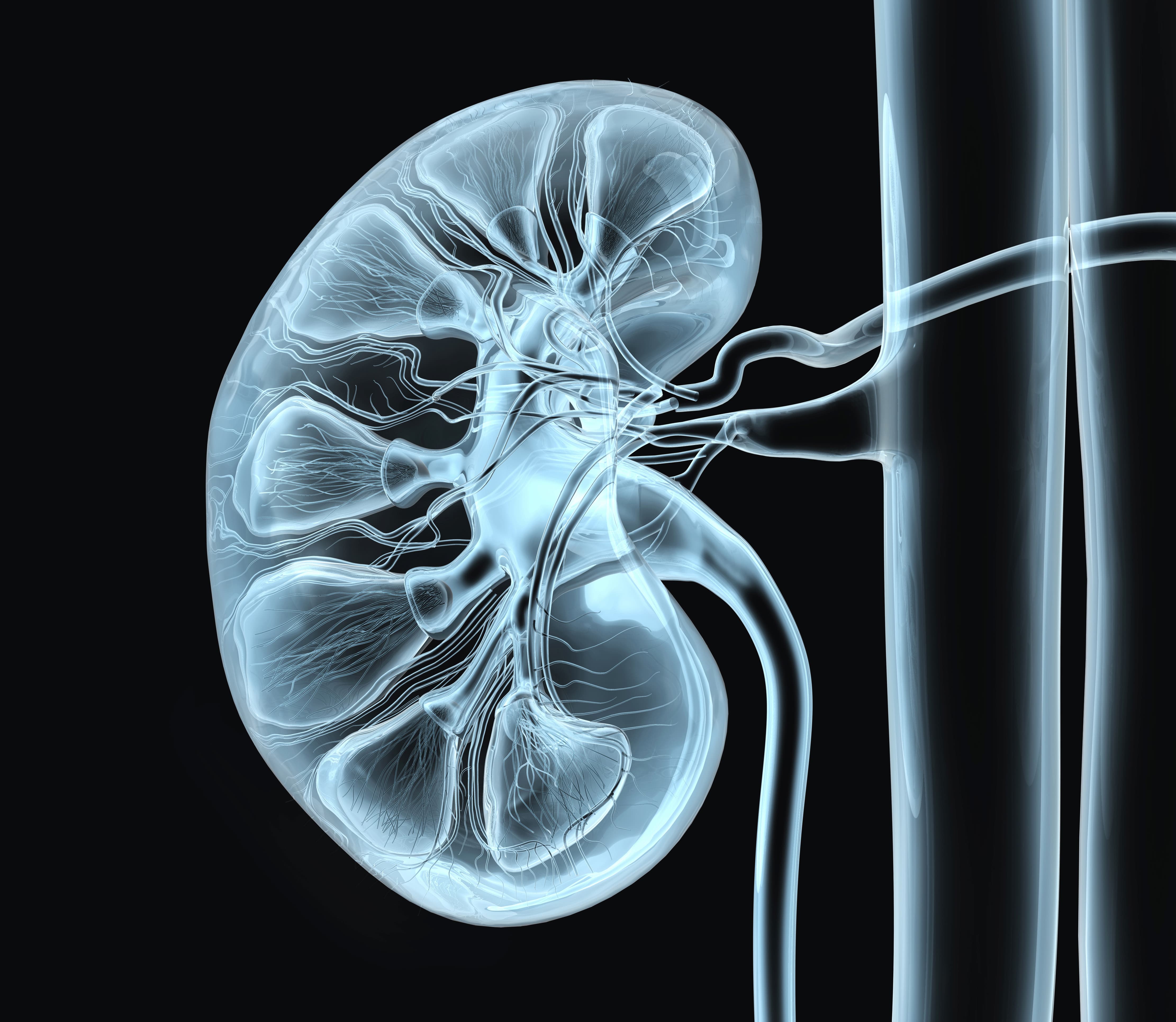Lenvatinib/Pembrolizumab Improves Responses Vs Sunitinib in Advanced RCC
The improvements occur regardless of PD-L1 status among patients receiving lenvatinib plus pembrolizumab for advanced renal cell carcinoma in the phase 3 CLEAR study.
The improvements occur regardless of PD-L1 status among patients receiving lenvatinib plus pembrolizumab for advanced renal cell carcinoma in the phase 3 CLEAR study.

Combining lenvatinib (Lenvima) with pembrolizumab (Keytruda) produced a higher objective response rate (ORR) vs sunitinib (Sutent) in the treatment of patients with advanced renal cell carcinoma (RCC), according to findings from the final overall survival (OS) analysis of the phase 3 CLEAR study (NCT02811861) presented at the 2023 Kidney Cancer Research Summit.
The ORR was 71.3% (95% CI, 66.6%-76.0%) among patients receiving lenvatinib plus pembrolizumab compared with 36.7% (95% CI, 31.7%-41.7%) among those receiving sunitinib. Of those with a response to lenvatinib plus pembrolizumab, 53.0% experienced a partial response (PR), 18.3% had a complete response (CR), and 18.9% had stable disease. Of those with a PR, 16.6% had a PR with at least 75% reduction in tumor size, 23.7% had a PR with between a 50% and 75% reduction, and 12.7% had a PR with between a 30% and 50% reduction.
Investigators reported CRs, near-CRs, and PRs across all patients receiving lenvatinib plus pembrolizumab regardless of PD-L1 status. Moreover, rates of CRs, near-CRs, and PRs were comparable across patient subgroups based on International Metastatic RCC Database Consortium risk assessments.
In the phase 3 CLEAR study, treatment-naïve patients with advanced RCC which had a clear cell component were randomly assigned 1:1:1 to one of 3 treatment arms. Treatment consisted of 20 mg of lenvatinib orally once a day plus 200 mg of pembrolizumab intravenously every 3 weeks, 18 mg of lenvatinib once a day plus 5 mg of everolimus (Afinitor) orally once a day, or 50 mg of sunitinib orally once a day based on a 4 weeks on, 2 weeks off schedule.
The primary objective of the final OS analysis was to characterize which patients experienced an objective response in the lenvatinib plus pembrolizumab arm. The primary end point of the CLEAR study was progression-free survival. Secondary end points included ORR, OS, and safety.
Investigators stratified patients based on geographic region and Memorial Sloan Kettering Cancer Center prognostic risk groups. Evaluations of tumor responses involved the use of RECIST v1.1 criteria. Additionally, the data cutoff date for the final prespecified OS analysis was July 31, 2022.
The median age of patients who experienced a PR to lenvatinib plus pembrolizumab was 64.0 years (range, 38.0-84.0). Additionally, most patients with a PR were male (78.2%), from Western Europe or North America (56.4%), and had a baseline Karnofsky performance status of 90 to 100 (81.9%).
Across those with a CR, a PR, a PR with up to 75% tumor reduction, a PR with between 50% and 75% tumor reduction, and those with a PR with between 30% and 50% tumor reduction, anywhere from 67.7% to 82.2% of patients had lung lesions. Additionally, 24.4% to 55.4% of patients had 1 metastatic organ or site, 66.1% to 82.2% had intermediate- or poor-risk disease, and 29.2% to 51.1% had PD-L1–negative tumors. Anywhere from 48.9% to 93.8% of patients underwent prior nephrectomy.
The median duration of response (DOR) was 26.7 months (95% CI, 22.8-34.6) among patients receiving lenvatinib plus pembrolizumab vs 14.7 months (95% CI, 9.4-18.2) among those receiving sunitinib.
For patients receiving lenvatinib plus pembrolizumab, the median DOR was 43.7 months (95% CI, 39.2-not evaluable [NE]) among those with a CR and 20.4 months (95% CI, 17.0-25.7) among those with a PR. Additionally, the median DOR was 30.5 months (95% CI, 22.4-NE) for those with a PR and higher (75% or greater) tumor reduction, 19.6 months (95% CI, 13.0-25.8) for those with a PR and intermediate reduction (between 50% and 75%), and 14.7 months (95% CI, 8.9-20.2) for those with a PR and lower reduction (between 30% and 50%).
Across all responders, anywhere from 28.9% to 84.6% of patients experienced a response for at least 18 months.
The median OS was not evaluable (95% CI, NE-NE) for those with a CR or near-CR and 46.3 months (95% CI, 39.5-NE) for those with a PR and a maximum tumor reduction of at least 30% and no greater than 75%. The 24-month and 36-month OS rates in these responder groups were 100% vs 79.5% and 96.9% vs 61.7%, respectively.
Patients with a CR had a median of 3.12 months (range, 0.10-41.2) until time of first dose reduction. Moreover, the median time to first dose reduction among those with a PR was 2.12 months (range, 0.49-24.87) for those with lower tumor reduction, 2.22 months (range, 0.26-29.67) for those with intermediate reduction, and 1.87 months (95% CI, 0.26-26.25) for those with higher reduction.
The median duration of treatment among patients with a CR, those with a near-CR, and those with a PR were 36.5 months (range, 4.4-59.1), 26.6 months (range, 2.8-56.7), and 23.8 months (range, 2.8-56.7), respectively.
Reference
Motzer RJ, Powles T, Hutson T, et al. Characterization of tumor response with lenvatinib plus pembrolizumab in patients with advanced renal cell carcinoma: final overall survival analysis of the CLEAR study (4-year median follow up). Presented at the 2023 Kidney Cancer Research Summit; July 13-14, 2023; Boston, MA. Abstract 66.
Newsletter
Stay up to date on recent advances in the multidisciplinary approach to cancer.